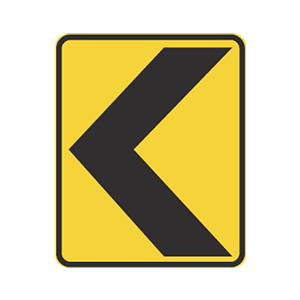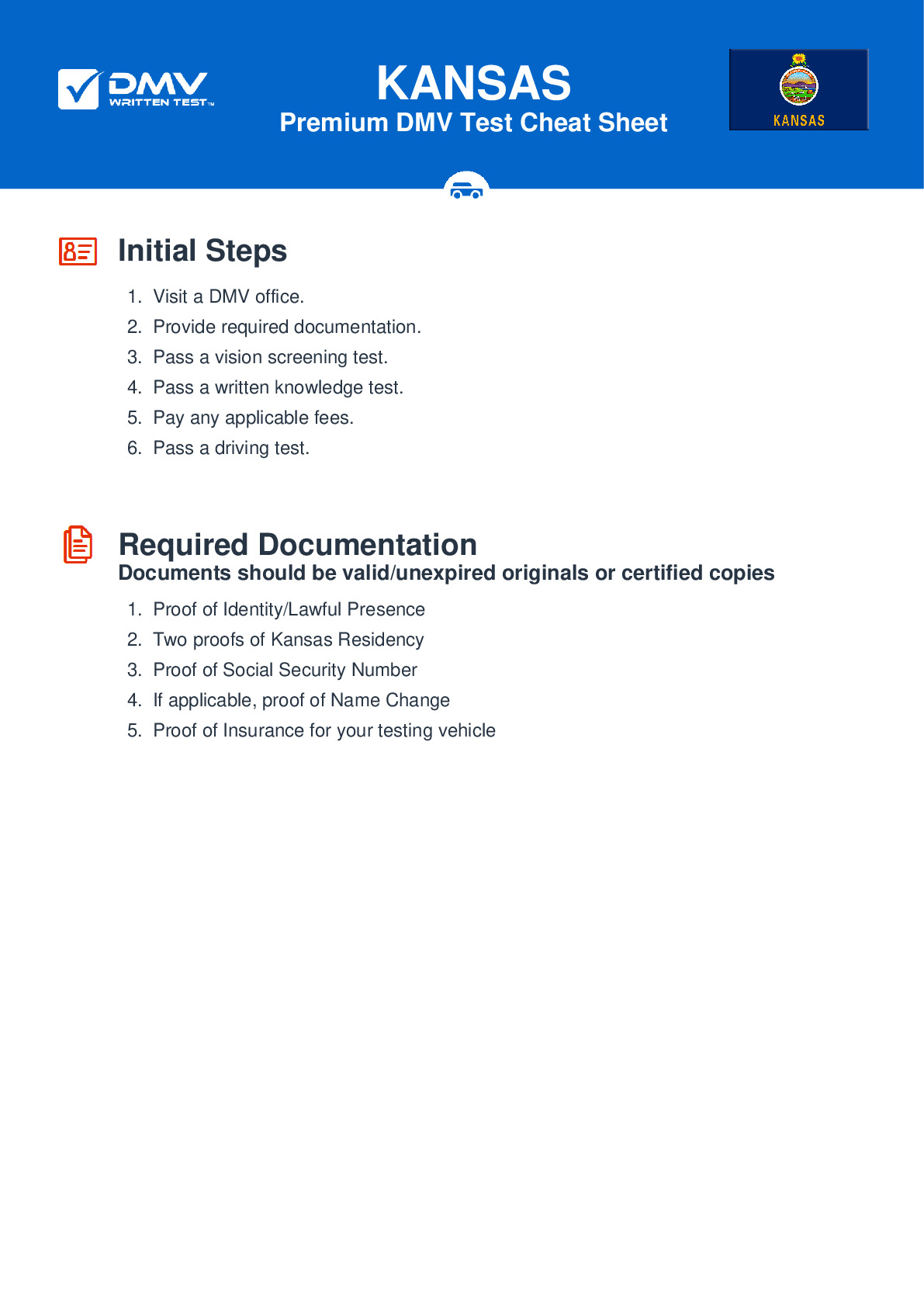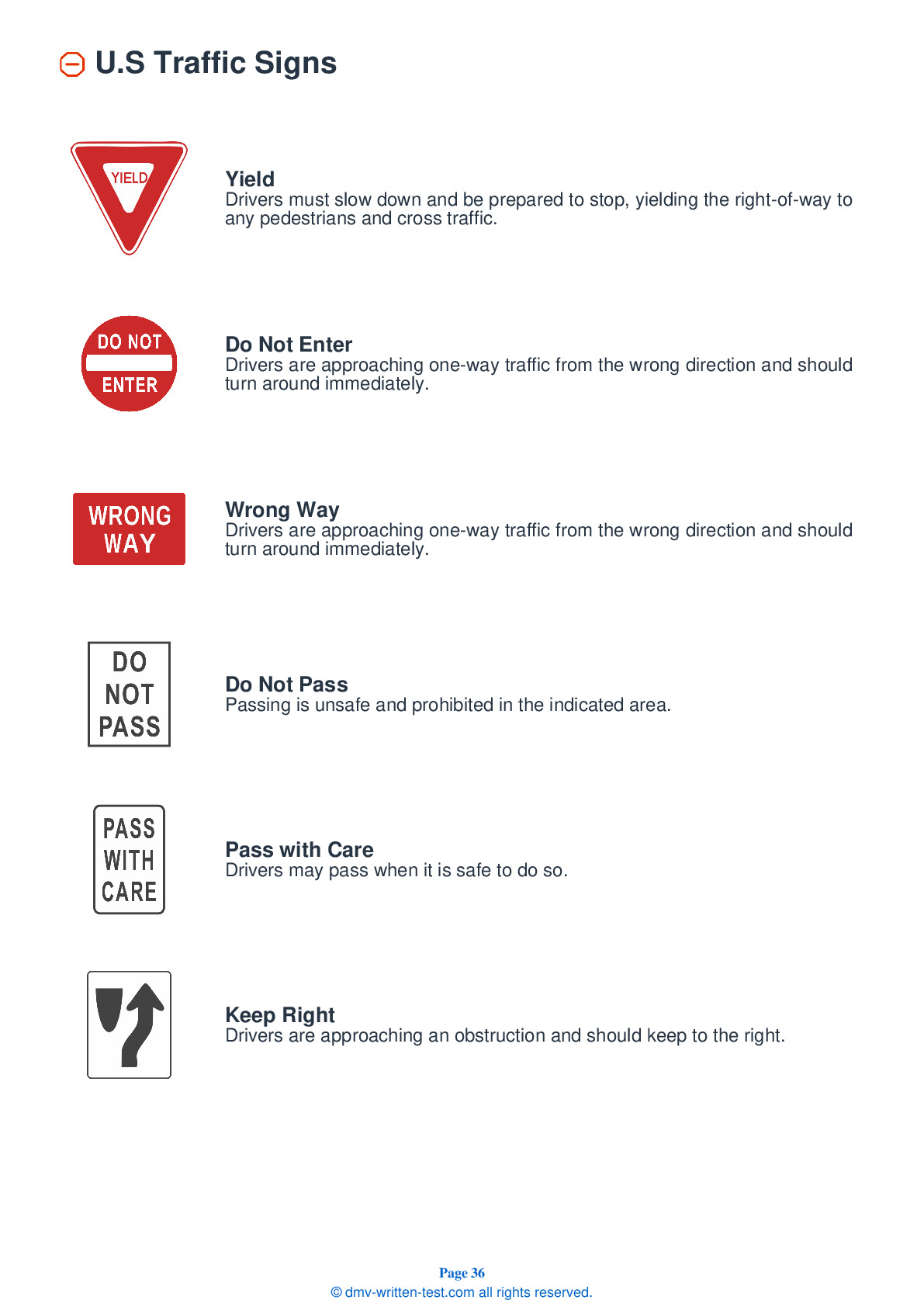2025 Kansas Permit Test 17
The following questions are from real DMV written tests. These are some of the actual permit questions you will face in Kansas. Each permit practice test question has three answer choices. Select one answer for each question and select "grade this section." You can find this button at the bottom of the drivers license quiz. For a complete list of questions and answers for Kansas please visit https://cheat-sheets.dmv-written-test.com/en/kansas/car.
Number of Tests
Number of Question
Passing Score
17. If you experience a tire blowout:
Explanation
If you experience a tire blowout, you should slow down gradually by taking your foot off of the accelerator. Don't apply the brakes until the vehicle has slowed considerably.
18. When stopped at a red traffic light with a green arrow, you may proceed in the direction of the arrow if you:
Explanation
You may proceed in the direction that a green arrow signal is pointing if you are in the proper lane, regardless of any other signals that are displayed. Before turning, you must yield the right-of-way to pedestrians and vehicles already within the intersection.
19. Water on the road can cause a vehicle to hydroplane. Your car may hydroplane at speeds as low as:
Explanation
Hydroplaning occurs when there is standing water on a roadway. At speeds up to 35 mph, most tires will channel water away from the tire. As your speed increases past 35 mph, tires cannot channel the water as well and your tires may start to lose contact with the road and ride over the water like a set of water skis.
20. Which of the following statements is true?
Explanation
Driving too slowly can be dangerous because it may cause drivers behind you to become frustrated and make dangerous moves to pass you. It is safest to drive with the flow of traffic, within the legal speed limit.
21. Which of the following statements about blind spots is true?
Explanation
Even if a vehicle is properly equipped with rearview and outside mirrors, it still has blind spots that cannot be seen in the mirrors. Large trucks have much larger blind spots than most passenger vehicles.
22. This sign means:

Explanation
This sign warns a driver of a change in direction or a narrowing of the road. A driver may find several of these signs on the outside of a sharp curve or on approaches to a narrow bridge.
23. Always stop before crossing railroad tracks when:
Explanation
Expect a train on any track, at any time, traveling in either direction. If you need to stop after crossing the tracks, wait until you can completely cross the tracks before proceeding. Make sure your vehicle clears the tracks before you stop.
24. When parking your vehicle on any hill:
Explanation
When parking on a hill, you should always leave your vehicle in gear or in the "park" position. If there is no curb, you should turn your front wheels so that the vehicle will roll away from the center of the road if the brakes fail. If there is a curb, the front wheels should be turned toward it (if headed downhill) or away from and gently touching it (if headed uphill).
25. Stopping distances and the severity of collisions:
Explanation




